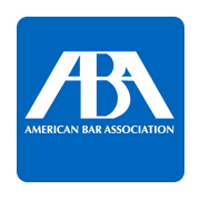ABA task force recommends how police and bar groups can help build trust in justice system

The legal profession can help build trust in the American criminal justice system in part by encouraging best practices by police departments, according to an ABA task force report.
The ABA Task Force on Building Public Trust in the American Justice System released its report (PDF) on Friday, according to an ABA press release.
The 15-person task force looked at how police departments can help repair frayed relationships between police and communities of color, and it recommended three steps that can be taken by the organized bar to address the problem. Besides encouraging best practices, the ABA and other bar groups can also build consensus about needed reforms and can educate the public about how the criminal justice system works, the report said.
The ABA Board of Governors accepted the report and the three recommendations when it met on Thursday and Friday during the ABA Midyear Meeting in Miami.
ABA President Linda A. Klein commented on the report in the press release. “The lack of trust by citizens in our justice system is deeply troubling and we must find ways to rebuild that confidence so that our communities across our diverse country are stable and secure,” she said.
The ABA task force report identified several policies and practices by police departments that have created distrust among communities of color. The task force said it was guided by the work of President Barack Obama’s Task Force on 21st Century Policing and the U.S. Justice Department. Those areas include:
Disparities in the rate at which whites and blacks are subjected to police investigative stops. “Ensuring that investigative stops are initiated for good and valid reasons promotes respect for those conducting the stops,” the report says.
Confrontational police interactions. “Interacting with communities in a professional and courteous way presents an opportunity to improve perceptions on all sides of the encounter,” the report says.
The arrests of minorities for minor offenses at higher rates than whites.
Excessive use of force. “Police officers perform dangerous work that can require the use of lethal and nonlethal force,” the report said. “But when force is exercised without justification or restraint, it undermines confidence in law enforcement.”
Harsher treatment of minorities at multiple stages of the criminal justice system, including bail, plea bargaining and sentencing.
Inadequate law enforcement training and oversight. “There is also a role for external oversight,” the report says. “The perception that police departments constitute law unto themselves undermines public trust.”
The report cautions that it should not be construed “as a sweeping denunciation of police methods and motives.”
“A productive discussion about how to narrow the rift between communities of color and law enforcement requires all participants to approach each other with open minds and without hostility,” the task force report says, “and to base decisions on evidence rather than preconceived ideas, particularly because this is a context where emotions can run high.”
The ABA task force was chaired by Theodore Wells Jr. of Paul, Weiss, Rifkind, Wharton & Garrison. Monique Dixon of the NAACP Legal Defense and Educational Fund was the task force reporter. Task force members included representatives from law enforcement, prosecutors’ offices, the judiciary, state and federal government, law firms and nonprofits.
The ABA Board of Governors has created a five-member working group to work with the appropriate entities for consideration and implementation of the report.
Follow along with our full coverage of the 2017 ABA Midyear Meeting



